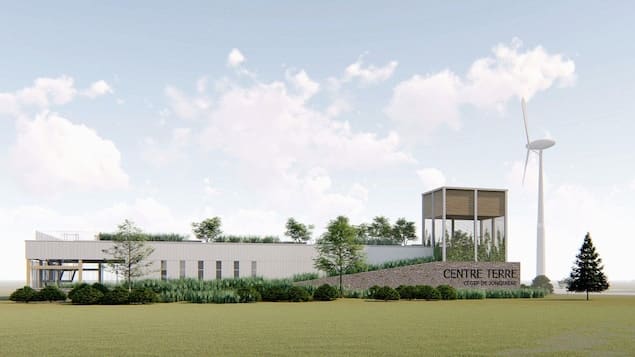This is a unique project in Canada, since all renewable energies will be studied under the same roof, announced the Cégep de Jonquière. Specialized equipment will also be purchased.
The new pavilion will be on rue Panet. The TERRE Chair was created in 2012 and became the TERRE Center in October 2019.
In addition to the nine programs concerned at Cégep de Jonquière, universities and the community will also be able to take advantage of the facilities for training and applied research.
[Il y aura] a bit of everything that is done technologically today, so all researchers will be attracted to this place. With all our partners, we will be able to develop projects that are really moving in the direction of energy transition
explained Martin Bourbonnais, holder of the Center TERRE, during a press conference held on Tuesday.
For the latter, it is an enhancement to the training currently offered. There are a lot of people who will see their training improved, colored, tinged with renewable energies
he continued.
Quebec is investing $14.7 million. Desjardins donated $700,000 to the project. In addition to contributing $300,000, Rio Tinto is also offering a bank of hours of its experts for research and development.
The TERRE Center should be operational in 2026 and within 10 years, 24 jobs will be created.
The building will be considered carbon neutral, the college said in a press release. Three satellite sites, located in La Baie, Saint-Bruno and Saint-Roch-de-Richelieu, will be added to this main infrastructure.
Two years of preparation
For the director general of Cégep de Jonquière, Raynald Thibeault, this is the culmination of two years of teamwork.
It will supply our customers, our teachers and our students, but also the whole community, the region, Quebec and businesses. It will be a place to do research, find out what is most efficient in terms of renewable energy and energy efficiency. It will be a living laboratory where everyone will be able to draw better conclusions for their local application and how to apply it in practice.
boasted the general manager who intends to retire in six months.
With the new facilities, it will be possible to simulate an isolated energy environment with small chalets. This will serve to better meet the needs of this type of environment, as in northern Quebec.
” There will be three small research buildings, in which there will be one that will have kitchen facilities, another of the residential type and the last, which will have a service, such as a laundry room. It will be a simulation of what can be found in isolated facilities such as an outfitter. »
This will allow us to simulate the really real energy consumption of these places. With our renewable energies, we will be able to make the right mixes and the right integrations and test them here before deploying them in the north
he added.
According to the minister responsible for the region, Andrée Laforest, this new pavilion will strengthen the image of Cégep de Jonquière internationally, since its expertise is already recognized.
For her part, the mayor of Saguenay, Julie Dufour, believes that this unique project encompasses the particularities of Jonquière. She fell in love with this project during a presentation received when she was borough president.
With information from Béatrice Rooney
Reference-ici.radio-canada.ca
